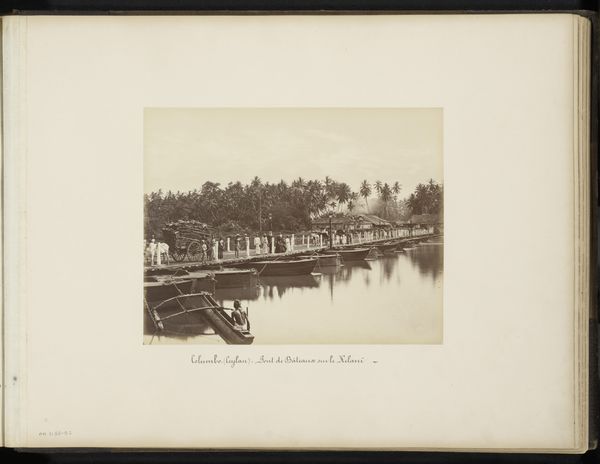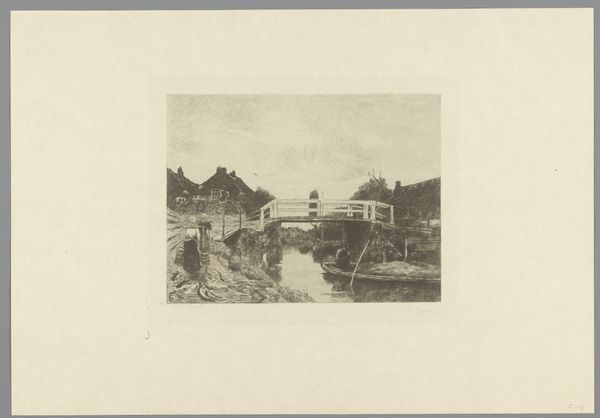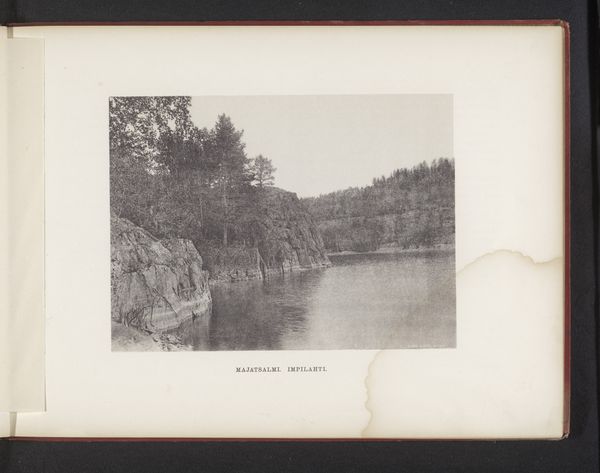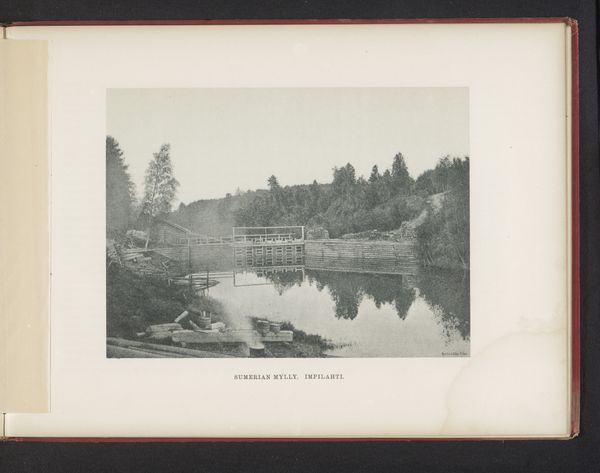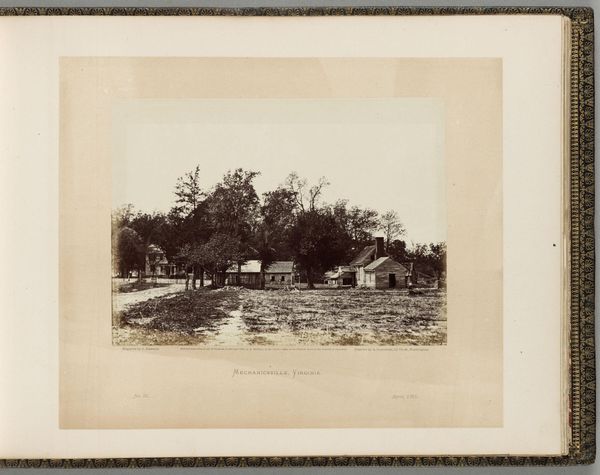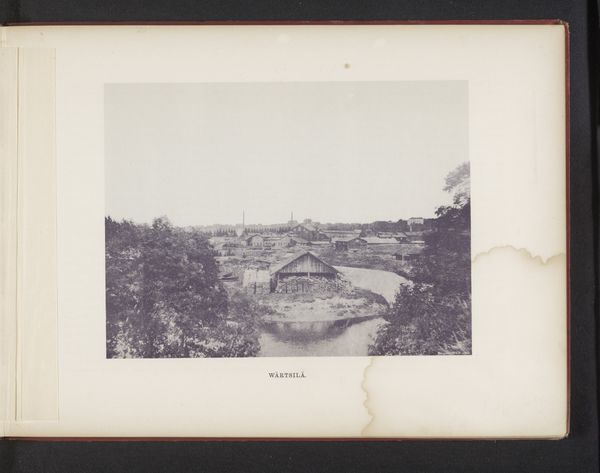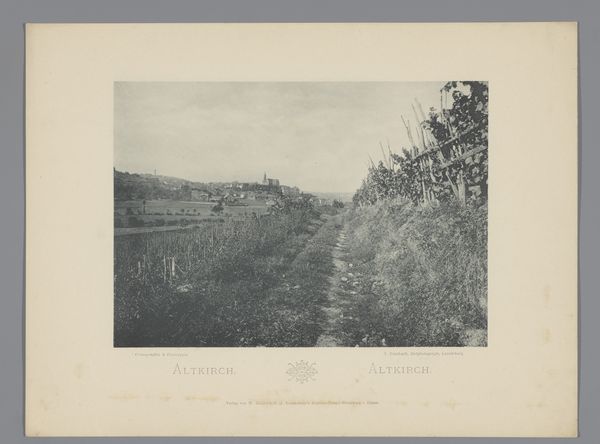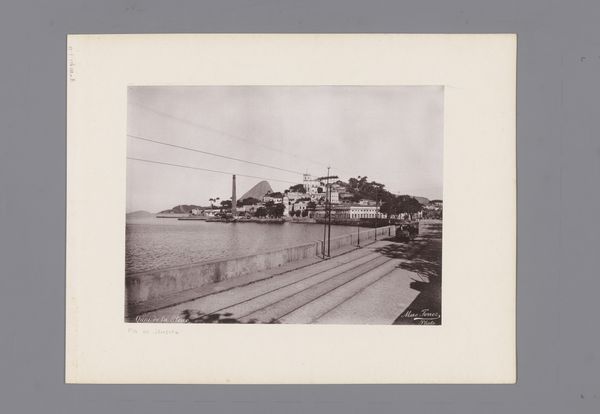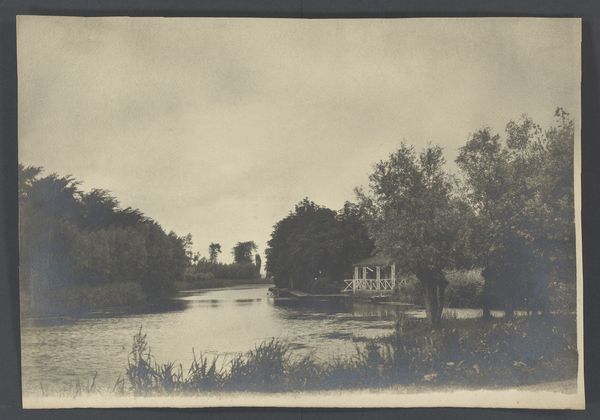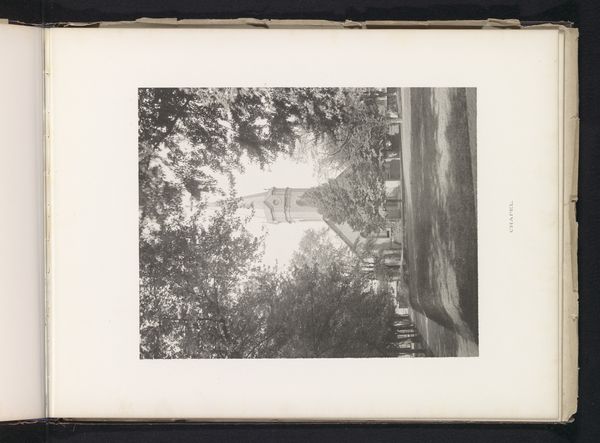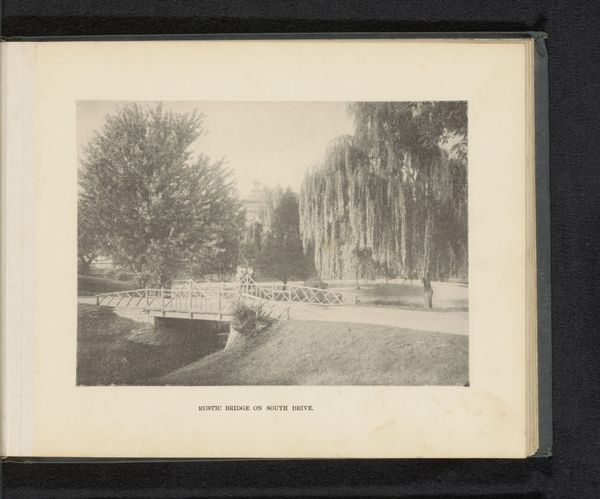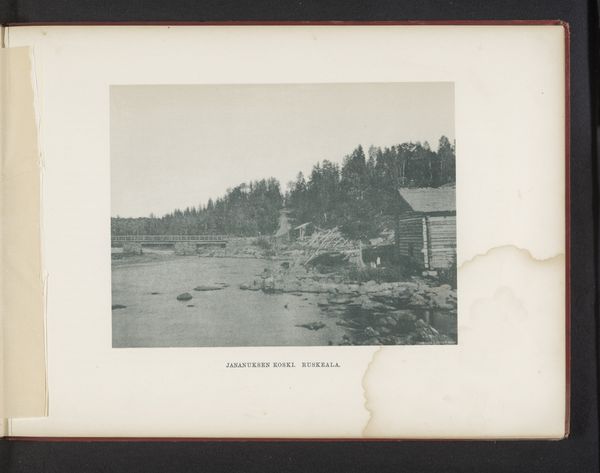
print, photography, gelatin-silver-print
#
pictorialism
# print
#
landscape
#
photography
#
gelatin-silver-print
#
watercolor
#
monochrome
Dimensions: height 166 mm, width 222 mm
Copyright: Rijks Museum: Open Domain
Editor: We're looking at a gelatin silver print titled "Gezicht op boomstammen in het water en huizen om het water," or "View of tree trunks in the water and houses around the water," created by Impi Backman between 1888 and 1893. It feels incredibly serene, almost like a dream captured in monochrome. What draws your eye in this piece? Curator: The persistent motif of water immediately captivates. Water, across cultures, acts as a potent symbol of purification, transition, and the unconscious. Notice how the logs disrupt its surface, introducing an element of industry, a human intervention upon nature. Editor: So, the logs aren't just lumber; they represent something more? Curator: Precisely. They are a symbolic bridge between nature's tranquility, embodied by the water and surrounding landscape, and the built environment—those houses in the distance. Backman is visualizing a negotiation between these two worlds. Do you see any religious signs? Editor: There is an antenna and the telegraphic poles! I am intrigued. Curator: Indeed. This subtle visual vocabulary implies communication and progress, integrated within a more traditional setting. Pictorialism sought to elevate photography to the level of painting by emphasizing artistic effect over strict documentation. Editor: I see it now! The soft focus lends itself to symbolism over stark realism. Curator: Exactly. This work serves as a poignant reminder of how technological advancement is perpetually woven into the fabric of our natural world, echoing, or even disturbing, ancient symbolic archetypes. I am very intrigued by the idea of progress, however. Are we, really? Editor: It’s amazing how much is communicated through such subtle choices! Thanks for illuminating the cultural symbols. I definitely look at the image in a totally different way now.
Comments
No comments
Be the first to comment and join the conversation on the ultimate creative platform.
